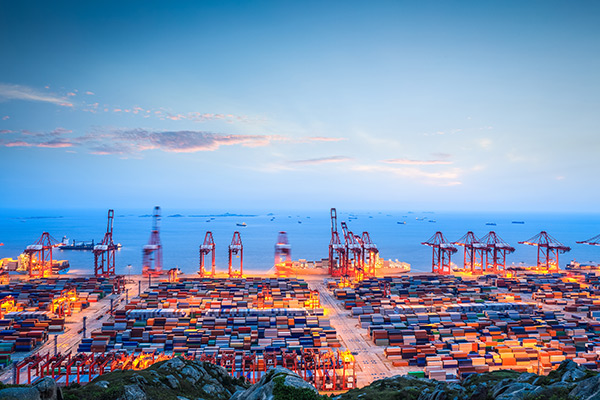Companies that have not yet mapped their supply chains may need to scramble to comply with 2023’s expected new regulatory requirements.
All businesses are global businesses. This fact was made clear during COVID-19. Prior to the pandemic, few C-level executives paid much attention to the details of supply chain management. Then COVID-19 raised the profile of supply chains, and suddenly everyone had to take notice.
CEOs are not the only ones taking notice; the federal government has, too, and is currently taking actions in ways that will affect corporate business planning, compliance obligations, pricing, and even long-term viability. More than I have ever observed in my 30 years of practicing trade law in Washington, D.C., there is tremendous bipartisan congressional interest in managing where companies get their products from and to whom they sell them. National security issues are taking priority over everything else, including corporate lobbying power. Where in 2022 there appeared some evidence that growing national security concerns could impact supply chains, in 2023 it is clear that global businesses need to be ready for much more.
Section 301 tariffs tipped off many businesses that it was time for them to focus more on their supply chains. Those that have already “mapped” their supply chains and know where all their subcomponents and basic materials are mined, grown, or manufactured are now way ahead of their competitors. Companies that fully map out their supply chains from a trade perspective can step back and think about future growth plans and sales markets: Are there more-efficient ways to use trade agreements to get products to customers? Can you plan new purchases or a new factory where there is a better trade agreement with no tariffs on your inputs and thus none on your finished products? Can you apply the country-of-origin rules so that some components are coming from China but are actually, under the rules of origin, properly imported as having been made in Japan? This kind of planning can create significant import duty savings, including on Section 301 China duties.
On the other hand, companies that have not spent the time or money necessary to map supply chains may find that they need to scramble to comply with additional regulatory requirements as the need for supply chain transparency increases in 2023. There has already been an increase in the number of regulations designed to protect national security and to prevent human rights abuses that require supply chain mapping to ensure compliance; for example, when selling to the military, suppliers must certify that their supply chains do not include items or components from certain Chinese companies or certain China-origin products. The FCC is banning the import/sale of devices produced by Huawei and ZTE and restricting the use of other Chinese-produced items. The Uyghur Forced Labor Prevention Act prohibits imports from the Xinjiang Uyghur Autonomous Region of China without U.S. government agreement that the goods were produced without forced labor. These certification requirements continue to expand as other governments are also requiring certifications on issues such as human rights.
The Customs Trade Partnership Against Terrorism program incorporates supply chain resiliency and national security concerns into its risk assessment analysis. In 2023, companies will need to know where every screw and bolt comes from, and most companies are not prepared for this analysis. With Republicans controlling the House, there will likely be a renewed emphasis on trade policy, as well as a probable push for blocking by the U.S. and its allies any Chinese access to emerging technologies and sensitive supply chains. The rhetoric from Congress will be loud, but national security could generate bipartisan support, with possible results ranging from new free trade agreements to the revival of previously rejected multilateral agreements such as the Trans-Pacific Partnership (now titled the Comprehensive and Progressive Agreement for Trans-Pacific Partnership), and from building on ongoing bilateral trade frameworks and forums to focusing on building technology exclusively in America. The U.S. Trade Representative (USTR), Department of Energy, and other agencies have supply chain teams, and the USTR just announced the hiring of a special counsel to manage supply chain policy, all while the administration continues to work on Section 301 tariff exclusions and to reconsider various bi-, tri-, and multilateral trade programs in light of supply chain security, especially with regard to technology, digital trade, and access to data.
No matter the political outcome, the quest for heightened national security controls will further fuel the need for corporate transparency and supply chain mapping. Just because something is “made in America” does not mean that its components or even its technology is “American made.” The political push for increased security will undoubtedly result in further regulatory requirements. National security rules and human rights certifications will continue expanding into ethical and environmental, social, and corporate governance (ESG) programs. More customers may start requesting related certifications. State legislatures can be expected to join in as well; for example, regarding critical infrastructure projects, the Texas Lone Star Infrastructure Protection Act prohibits companies from contracting with entities owned or controlled by individuals from China, Russia, North Korea, and Iran.
Companies that focus on supply chain mapping now will be better prepared to benefit from imminent trade liberalization and compliance requirements later. Companies that face these challenges now instead of later can expect increased collaboration, better strategic planning, more efficient costs savings, and, ultimately, more corporate growth with reduced risk. A review of supply chain data and processes by experienced trade counsel can help save money, improve performance, and encourage growth via lower import duties, better contractual compliance, and risk mitigation.
By Doreen M. Edelman, Lowenstein Sandler
ORIGINAL ARTICLE CAN BE FOUND HERE

